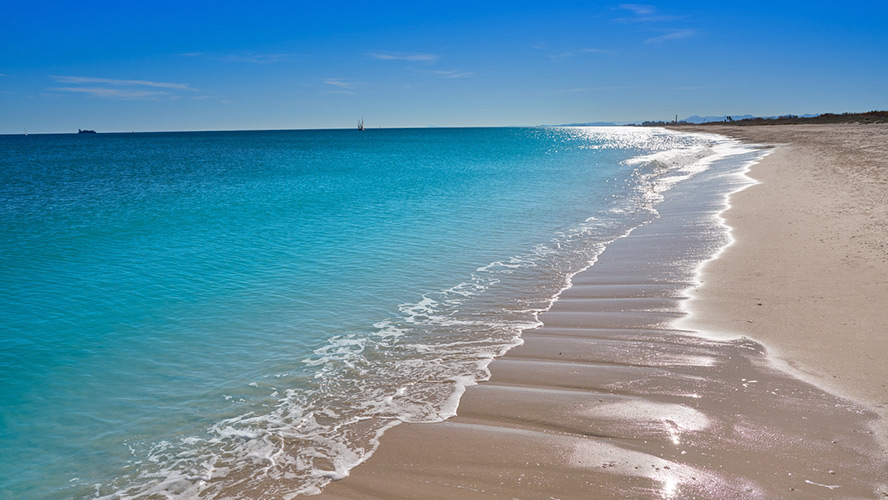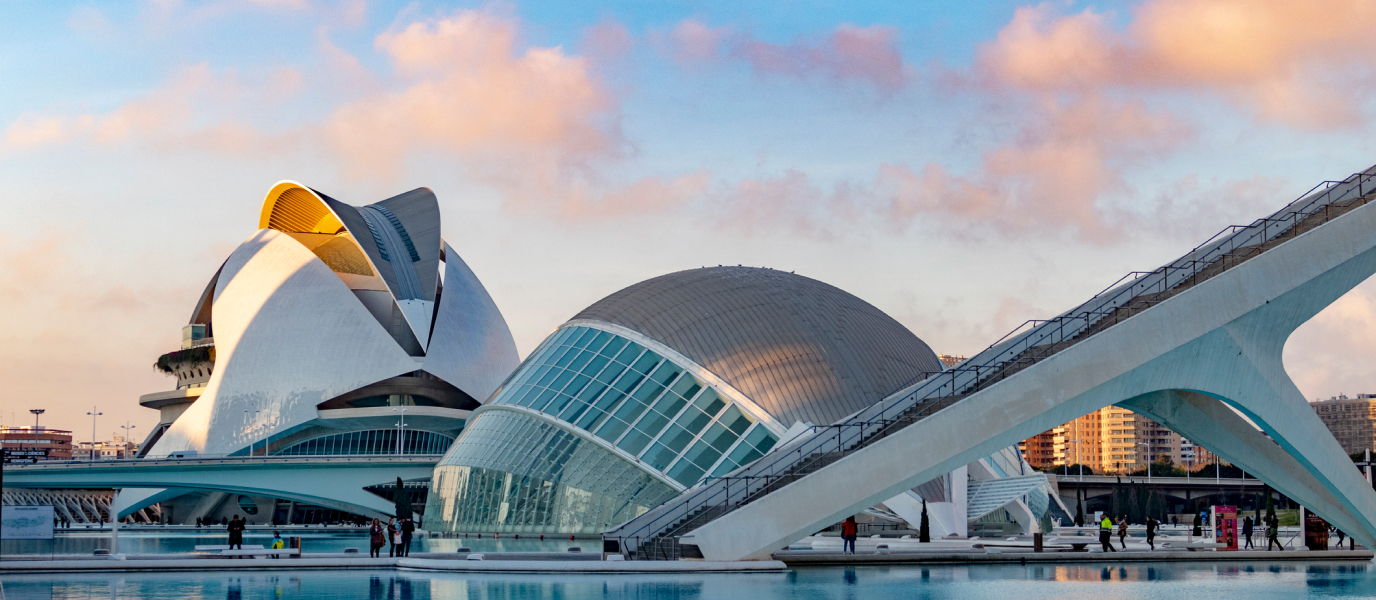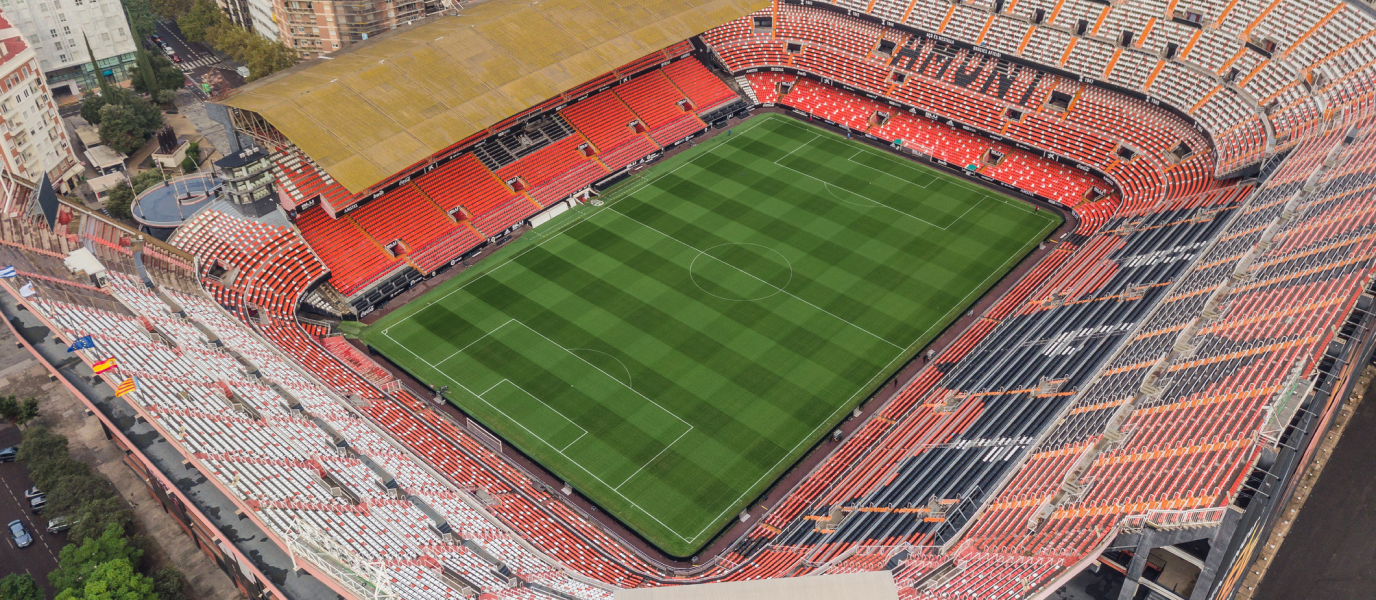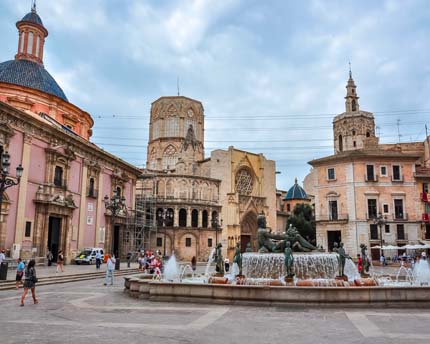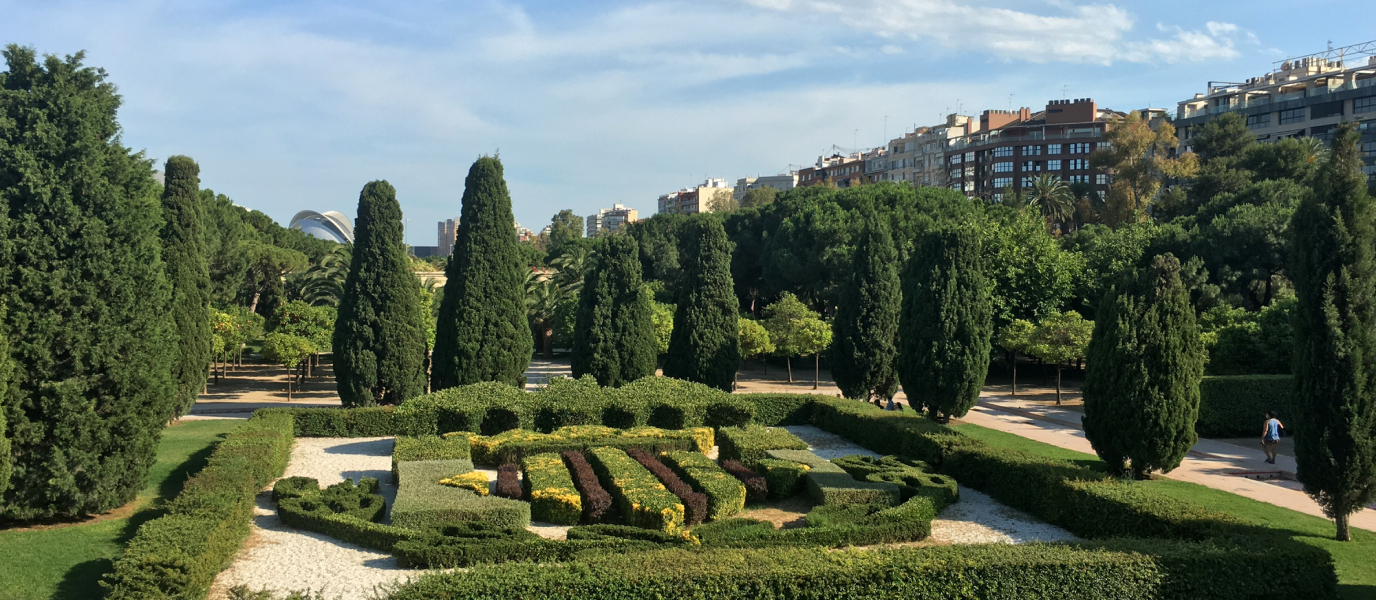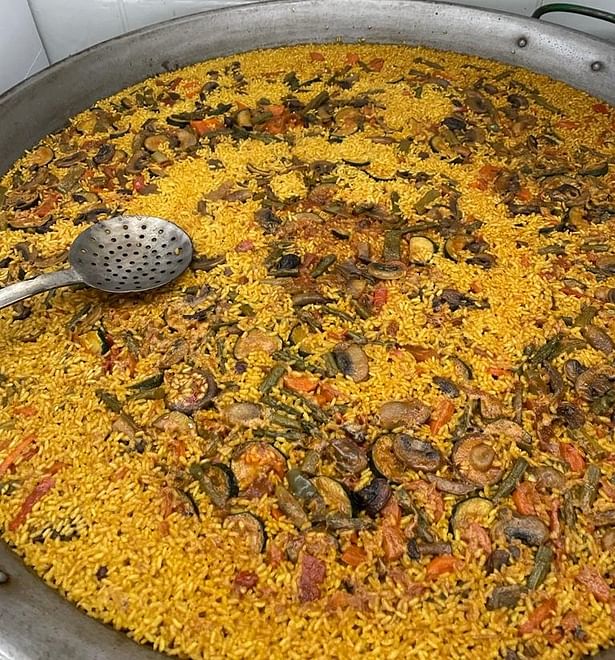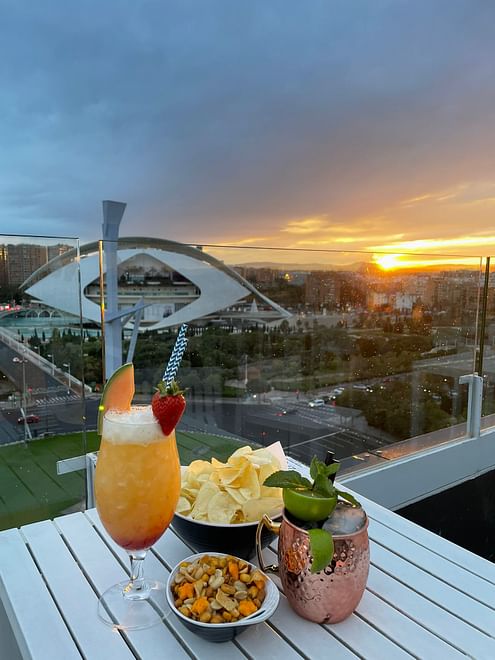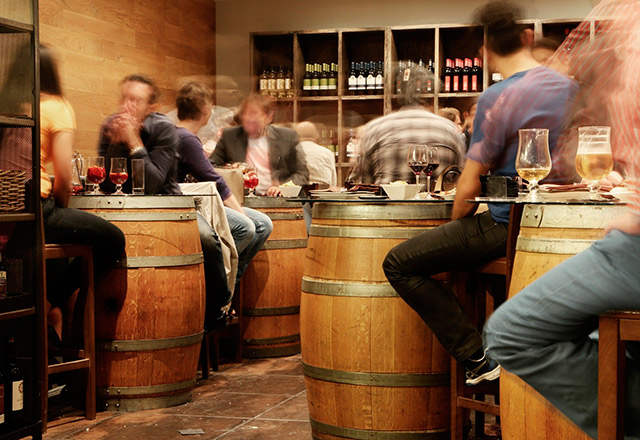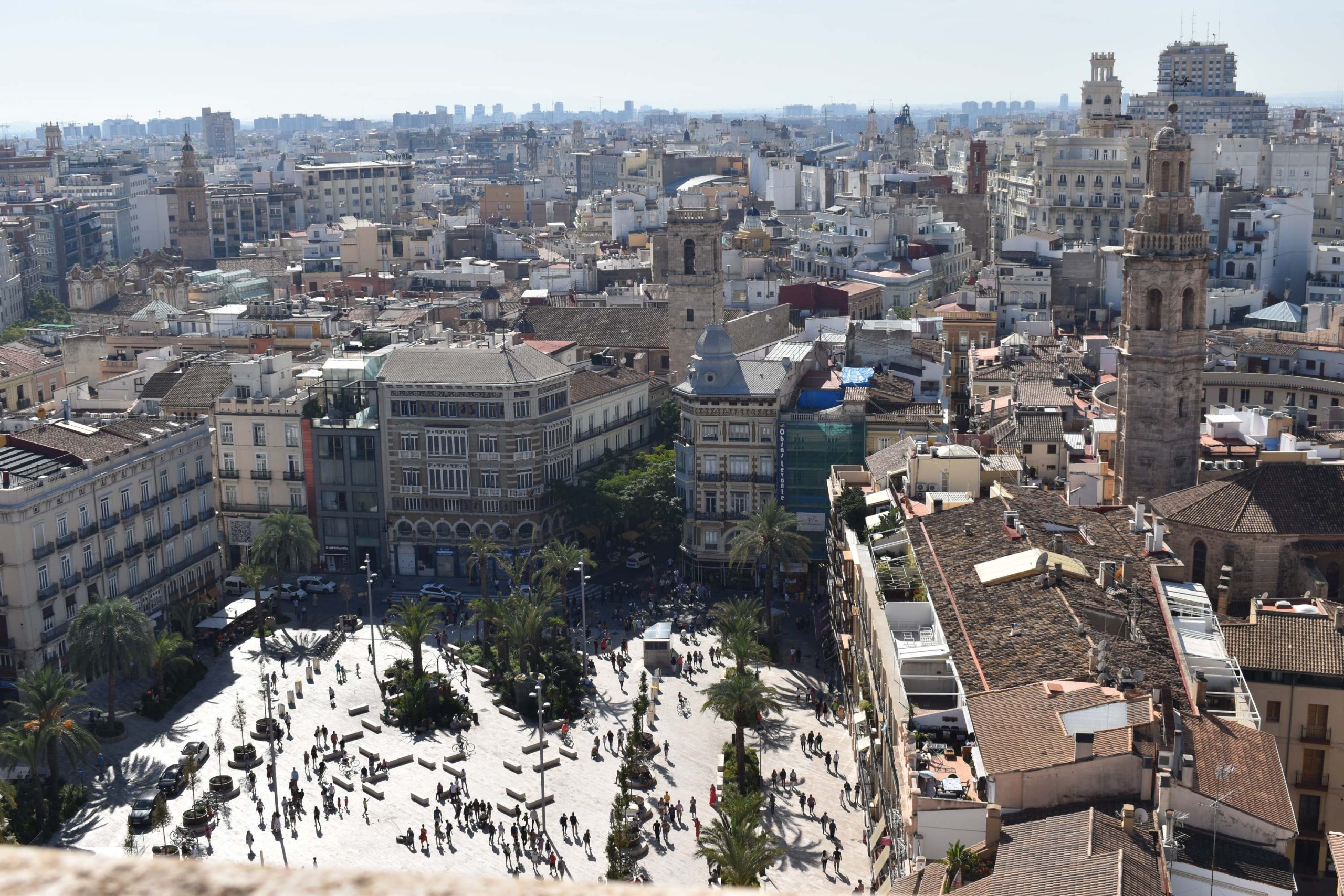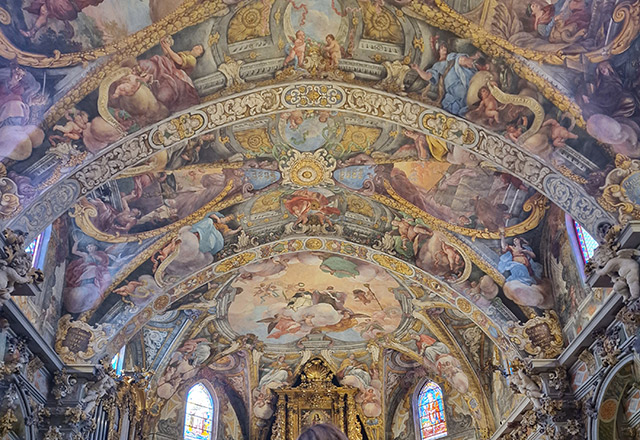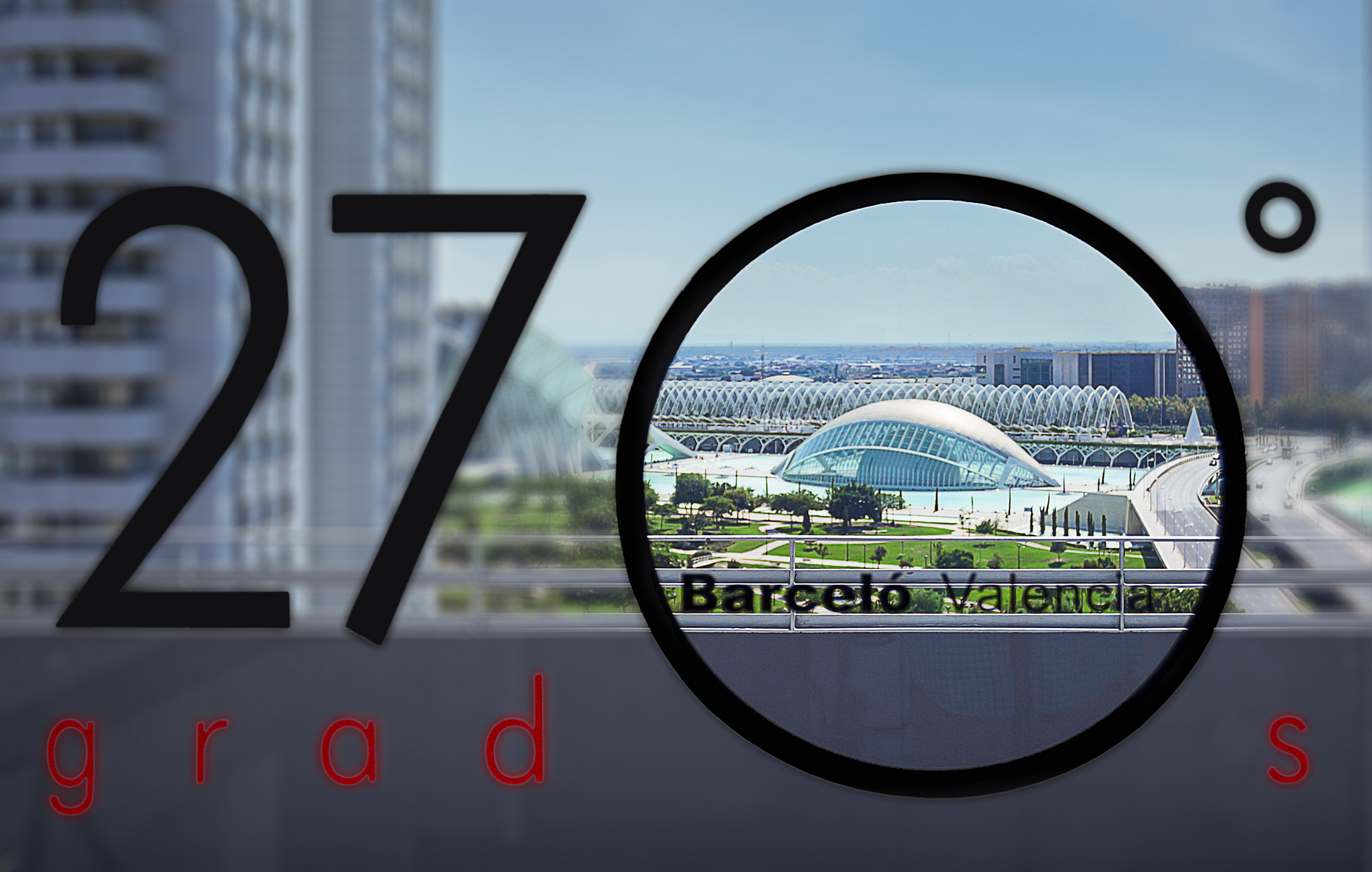Valencia is a city to be enjoyed, just likeMadrid, Barcelona, Bilbao or Seville. Visitors will find a wealth of treasure here, as this city has a long history and a huge variety of fascinating places to visit. Most of Valencia’s not-to-be-missed sights are in the old part of the city. This is where you will find the Cathedral and the Lonja de la Seda [Silk Exchange], definitely two of the most important historic buildings. However, there are also natural spaces that can compete for the top spot, due to their great beauty. These include the Natural Park de La Albufera, the Jardines del Turia, the beaches of El Cabañal and La Malvarrosa, the IVAM (Valencia Institute of Modern Art), and the Ciudad de las Artes y las Ciencias [Arts and Science Park].
Below, we list and describe some of the attractions that Valencia has to offer, and that no visitor should miss on any stay in the city.
NOT-TO-BE-MISSED PLACES IN VALENCIA
1. Oceanogràfic, Europe’s largest aquarium
This is, quite simply, Europe’s largest aquarium with over 45,000 specimens from 500 different species, swimming in salt water pumped from La Malvarrosa beach. The aquarium Oceanogràfic, built in 2003 by architects Félix Candela and José María Tomás Llavador, was designed to represent Earth’s main ecosystems. It is one of the places in Valencia that no visitor should miss. It is housed within the Ciudad de las Artes y las Ciencias de Valencia, and here visitors can see dolphins, beluga whales, walruses, sea lions, sharks, jellyfish, starfish, sea urchins, and more. Carrer d’Eduardo Primo Yúfera, 1B

2. Ciudad de las Artes y las Ciencias [Arts and Science Park]
This vast leisure, culture and scientific research complex began life in 1998, with the opening of Hemisfèric. Sited on the bed of the river Turia, the Ciudad de las Artes y las Ciencias covers an area of 350,000 m2, and has been designed as an open town within the great city of Valencia. It was designed by the architect Santiago Calatrava, and houses venerable institutions such as the Palau de les Arts Reina Sofía, Hemisfèric (Imax Cinema and Planetarium), the Umbracle (a garden that visitors can stroll around), the Príncipe Felipe Science Museum, Oceanogràfic, and the Ágora, a multi-use space. The complex is open to the public 365 days a year. Avenida Del Professor López Piñero, 7.
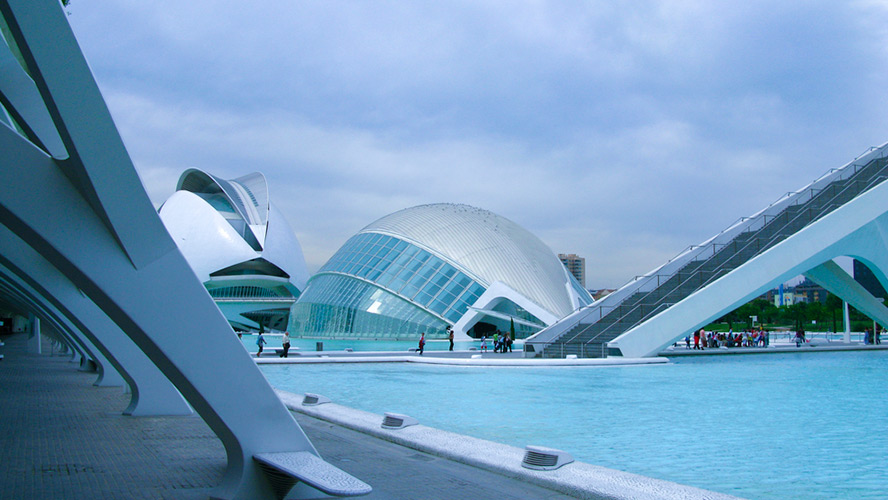
3. Palau de la Música
In Valencia, music has a home worthy of the emotions it evokes in human beings. Known as the Palau de la Música, its design is based on iron and glass. It stands in the Jardín del Turia, and visitors are both surprised and impressed by its appearance. It is as if a giant greenhouse was providing a space to listen to great artists and orchestras performing classical music in particular. The Palau opened in 1987, and was designed by José María García Paredes, winner of the 1956 National Prize for Architecture. It offers an extensive programme, so it is likely that you would have the opportunity to attend a concert during your stay.
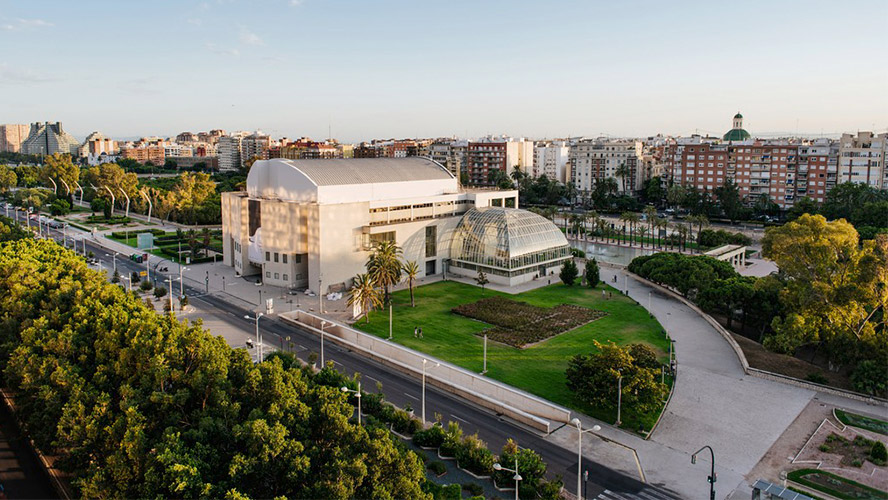
3. Ópera de Valencia
Another of Valencia’s temples to music is the Ópera de Valencia, also known as the Palau de les Arts Reina Sofía. It forms part of the Ciudad de las Artes y las Ciencias, and its design resembles the keel of a boat. Let’s not forget that it stands next to the river bed of the Turia. To many visitors, of course, it looks more like the helmet of an Imperial Trooper from Star Wars. But if the outside makes an impact, neither does the interior disappoint. The opera house has a 530 m2 stage, and can hold audiences of up to 1,800. Other areas of interest are the Aula Magistral, the Amphitheatre, and the Martín y Soler theatre. It is well worth joining a guided tour and then staying for lunch in the restaurant.
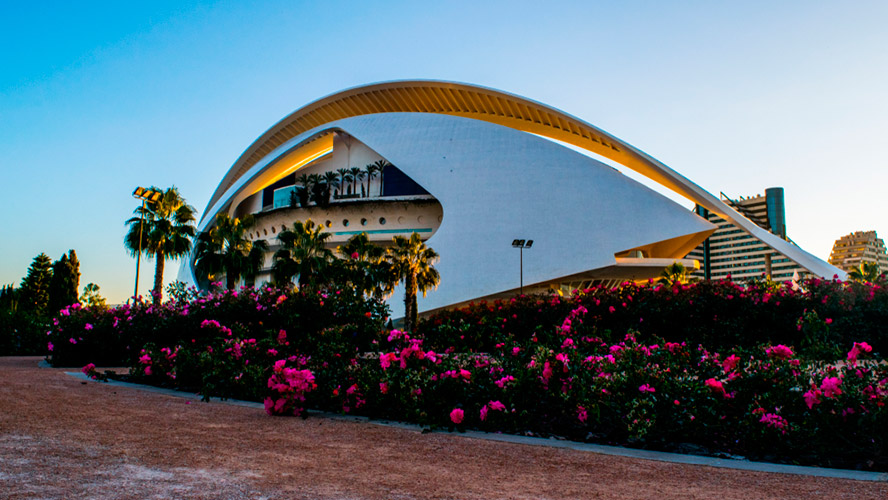
4. La Lonja de la Seda [Silk Exchange]
The Lonja de la Seda [Silk Exchange], designated a World Heritage Site by UNESCO in 1996, is one of Valencia’s iconic buildings. It dates from the fifteenth century, and is located opposite the Central Market and the Templo de los Santos Juanes. This masterpiece of Valencian Gothic secular architecture occupies an area of 2,000 m2, and comprises three sections (the tower, the Consulate of the Sea’s Hall, and the Trading Hall or Column Hall) built around a courtyard planted with orange trees. On the ground floor of the tower is the Chapel of the Immaculate Conception, and the two floors above were used to imprison merchants who defaulted on their payments. The Lonja de la Seda owes its name to the fact that silk was the city’s most thriving industry between the fourteenth and eighteenth centuries. Lonja, 2.
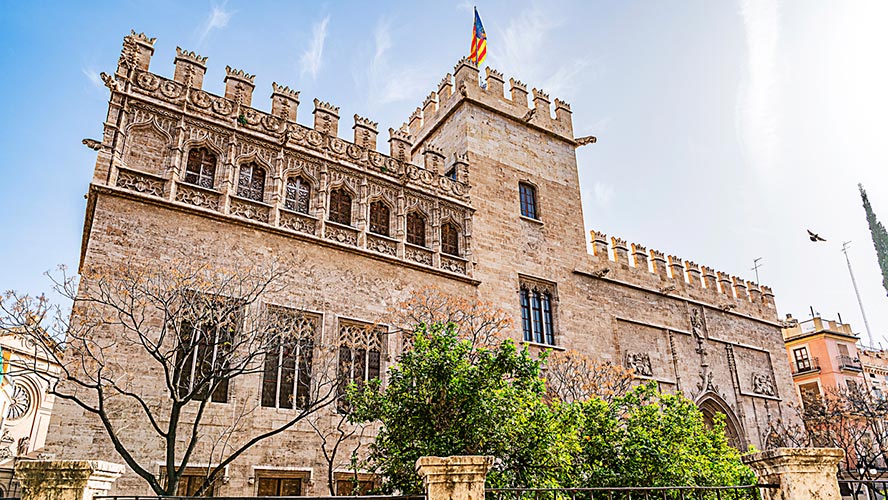
5. Valencia Cathedral
Though Gothic in origin, Valencia’s cathedral has acquired an array of architectural styles over the course of several remodellings. The church has three naves and, every Thursday at 12.00 midday, the unique Tribunal de las Aguas de Valencia [Water Tribunal] still meets near the Door of the Apostles. The rulings of this institution are fully respected, although it is not made up of professional judges. The cathedral’s most outstanding feature is the octagonal Miguelete bell tower, at over 50 metres tall. From inside the Cathedral, visitors can access the Diocesan Museum. Plaça de l’Almoina, s/n.
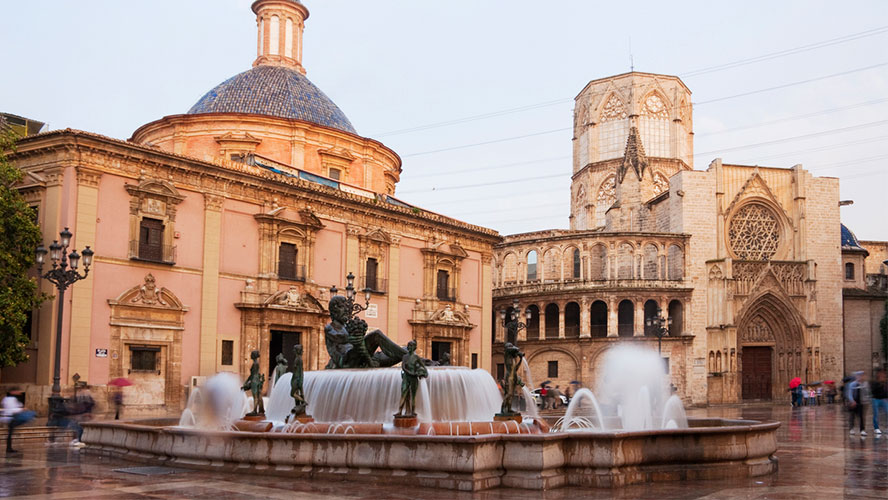
6. Mercado de Valencia [Market]
If you are passionate about food and drink, you really must visit Valencia’s Central Market, a gourmet’s paradise in a Modernista-style building, and offering excellent home-grown and Mediterranean produce. Covering 8,000 m2, this is said to be Europe’s largest market selling fresh produce. It is built from stained glass windows, tiles and iron columns reminiscent of the Eiffel Tower. The market accommodates over 1,200 stalls, and if you’re looking for a “gastro” eatery, make for the Central Bar, now in the hands of the chef Ricard Camarena. Here you can try typical Valencian cooking in a range of excellent tapas, raciones or rolls. Plaça de la Ciutat de Bruges, s/n.
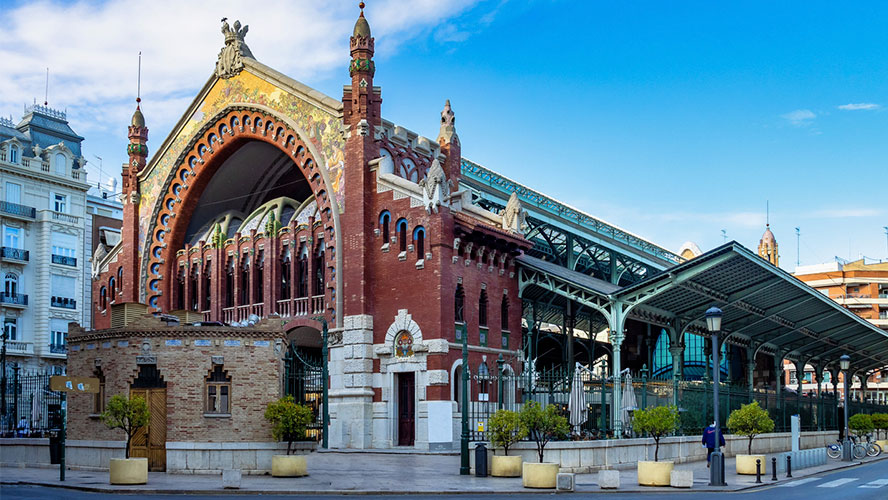
7. Torres de Serranos [Serranos Towers]
A superb example of Valencian Gothic architecture. The Torres de Serranos were built to defend one of the busiest gateways into old Valencia. Construction of the towers began in 1392, and they were spared when the city wall was demolished in 1865. From 1586 until 1887, they were used as a prison for aristocrats. Nowadays this is where, during Las Fallas (Valencia’s greatest festival), the Fallera Mayor [chief lady of honour] welcomes the celebrations. This event is known as the Crida, and is held on the last Sunday in February. Plaça dels Furs, s/n
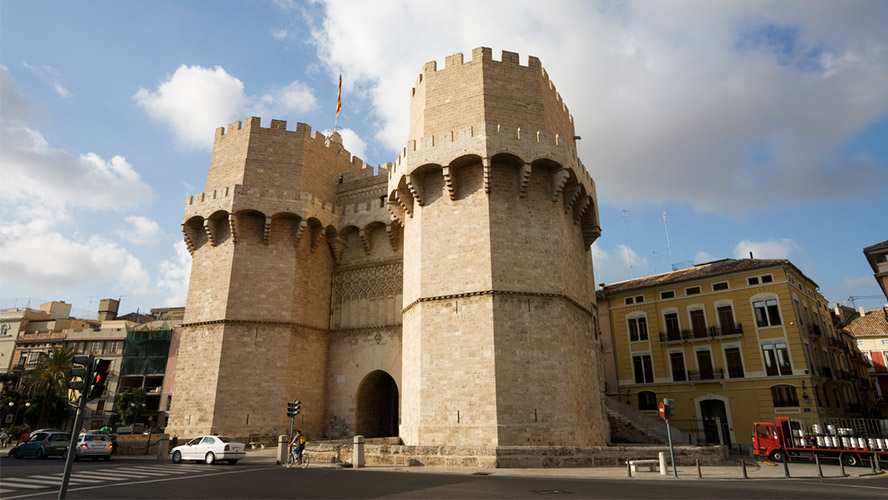
8. Torres de Quart
The imposing Torres de Quart guard one of the entrances in Valencia’s old town wall. The towers were built in the mid fifteenth century, and several craftsmen contributed to their construction: Francesc Baldomar, Jaume Pérez, Pere Compte, and Pere Bonfill. It seems that the name comes from the town of Cuart de Poblet, 5 kilometres away, since if you leave by this gateway you will be heading in that direction.
The towers have had various uses down the years. As well as guarding the entrance to the city, they have been used as a store for gunpowder and as a women’s prison. Today, their battlements are the ideal spot from which to admire Valencia’s skyline.
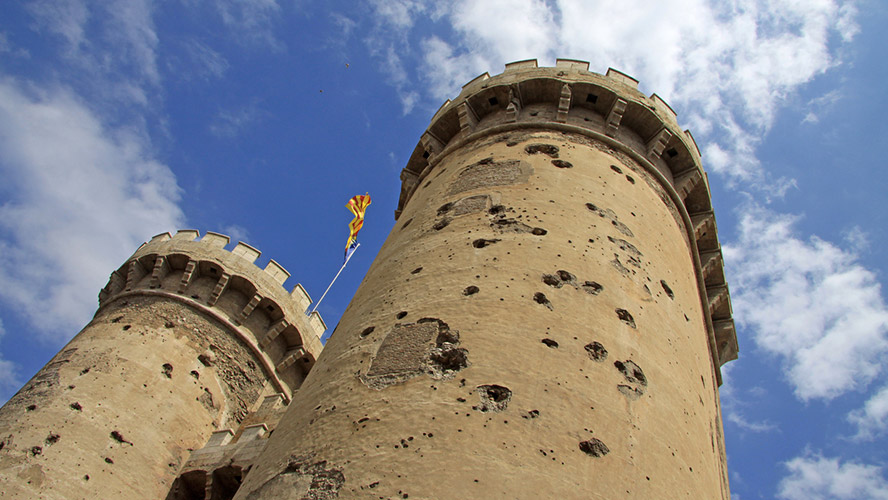
9. Valencia’s Plaza del Ayuntamiento
This square is the heart of the city. Valencia’s Plaza del Ayuntamiento [Town Hall Square] is one of the city’s most vibrant spots, not only because it is home to the Casa Consistorial [Town Hall] and other stately buildings, but also because it is an emblematic social meeting place since several bus routes converge here. Flower stalls stand in the middle of the square, and it is here that the traditional mascletás [firework displays] are held during the Fallas.
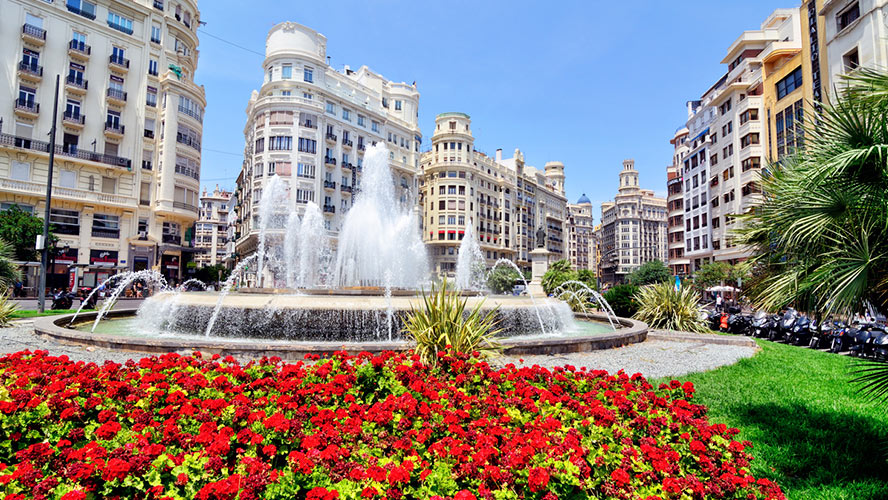
10. Barrio del Carmen de Valencia
Bounded by the Torres de Serranos and Torres de Quart, this is the liveliest area of the city, as well as being the neighbourhood with the richest history. Valencia’s Barrio del Carmen takes its name from the church and convent of the Carmen Calzado and, as we approach the heart of this neighbourhood, we stumble upon a labyrinth of cobbled streets. Here you will find the unique Portal de la Valldigna (an old archway leading into what was once the Arab quarter); the centuries-old Plaza del Árbol; and the tiny Casa de los Gatos [Cats’ House], as well as centuries-old shops and businesses. This chic, bohemian neighbourhood also boasts some important centres for art, including the IVAM [Valencia Institute of Modern Art]; the Museum of Illustration (MUVIM); and the cultural centres, the Centre del Carme and La Beneficencia. This district is a favourite haunt of lovers of gastronomy since, in addition to its famous market, the Mercado de Mossen Sorell, Barrio del Carmen also boasts a plethora of restaurants and terraces. And don’t forget to try the paella!
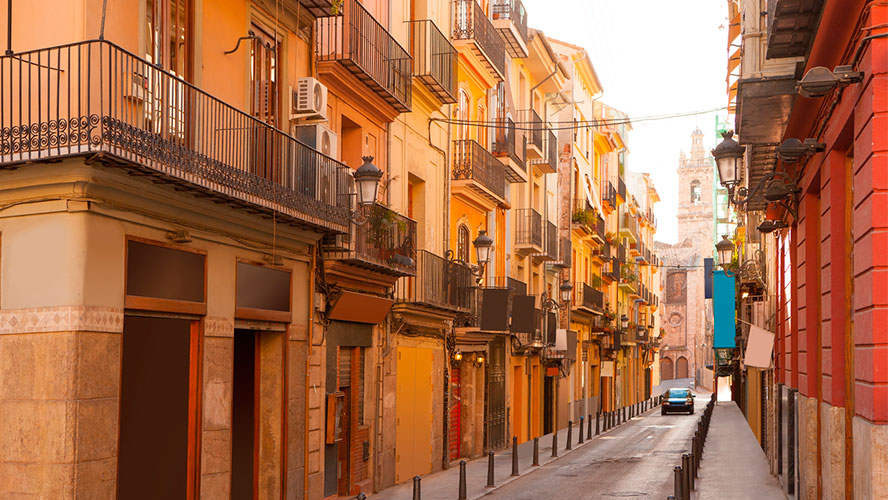
11. Palacio del Marqués de Dos Aguas
This is the home of Spain’s National Ceramics Museum. The Palacio del Marqués de Dos Aguas has an impressive alabaster entrance carved by the sculptor Vergara. The museum houses a superb ceramics collection from all kinds of sources, and recreates certain traditional spaces, such as a typical Valencian kitchen. Raconada de Federico García Sánchiz, 10.
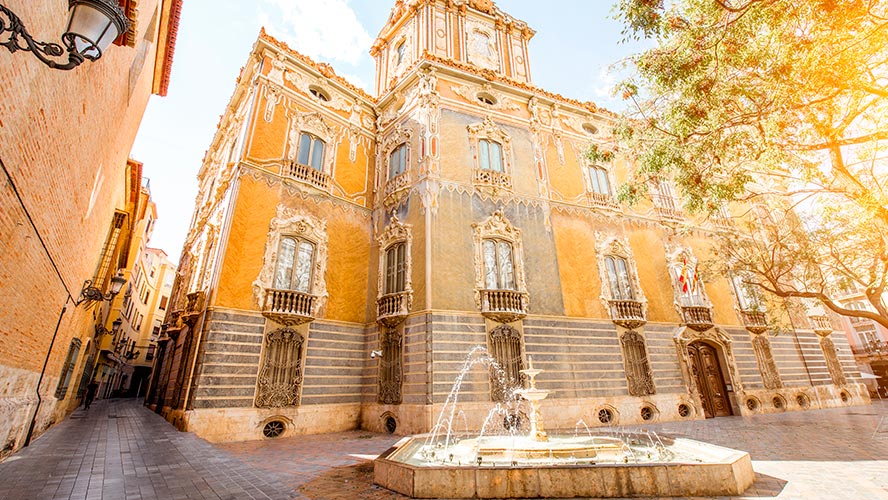
12. Plaza de la Virgen de Valencia
This is one of the city’s loveliest and most distinctive squares. The Plaza de la Virgen de Valencia lies at the heart of the historic quarter, on the exact spot where the Roman Forum once stood. The square is a pedestrianised area, a place to sit peacefully and enjoy one of its terraces while listening to the sound of the fountain or of the children playing. And, of course, to admire the magnificent buildings. The square takes its name from the patron of Valencia, the Virgen de los Desamparados. The basilica dedicated to her dominates this large, irregularly-shaped space. During the Fallas festival, massive offerings of flowers are brought here in honour of the Virgin. Visitors can also see the Apostle Doors on the Cathedral, as well as the Palau de la Generalitat de Valencia. Plaça de la Verge, s/n
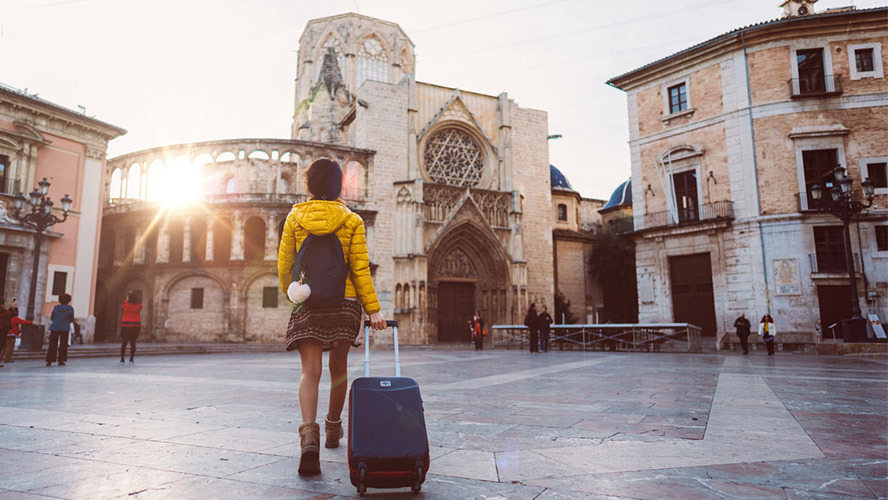
13. Jardines del Turia
The Jardines del Turia provide Valencia with space to breathe, to go for a run, meet with friends, or to stop by and visit iconic attractions such as the Ciudad de las Artes y las Ciencias. Great architects and landscape gardeners, including Ricardo Bofill, have contributed to this huge regeneration project on the banks of the river Turia.
Currently Valencians and visitors have access to a 7-kilometre stretch, divided into 12 stages, with plenty of gardens, bridges, ponds, children’s play areas, and terraces to stop for a drink and a snack.
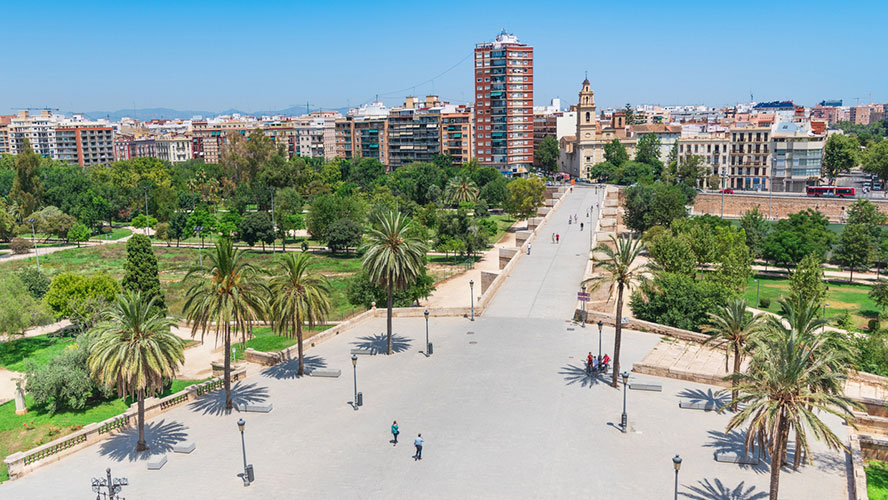
14. Ruzafa
The Ruzafa neighbourhood is an example of the phenomenon found in many cities, whereby the suburbs begin to attract bohemians, artists, bookshops, design studios, and alternative gastronomic establishments. It is fascinating to visit this district which combines the essence of the past with new trends. What many regard as “the hipster neighbourhood” has a history dating back to the ninth century, when Prince Abd-Allah Al-Balansi ordered a Moorish garden to be built here. More recently, in the nineteenth century, it was an independent town in its own right.
Any visit to Valencia should include Ruzafa, because it provides a chance to buy more original items, visit galleries, see the municipal market, and eat in superb restaurants and cafés.
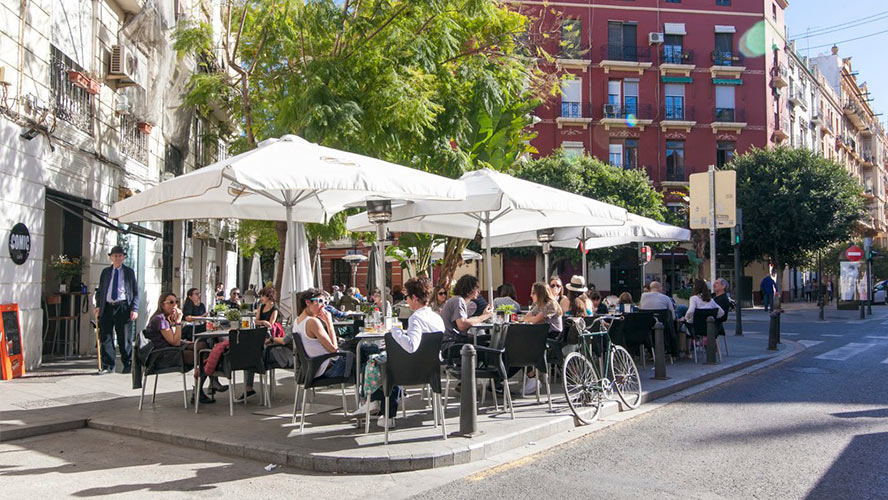
15. Bioparc Valencia
This is one of the world’s largest zoos. On entering the Bioparc Valencia, visitors feel as if they are in the animals’ habitat, because the zoo is designed so that there are no barriers between the public and the animals. The Bioparc specialises in animals from Africa, and is divided into four sections: dry savannah, humid savannah, equatorial African forest, and Madagascar. It occupies an area of 100,000 m2, and is home to over 800 specimens from 116 different species from all over the continent of Africa. It has a restaurant, gift shops, and a projection room to disseminate the objectives of Bioparc Valencia. Avenida Pío Baroja, 3.
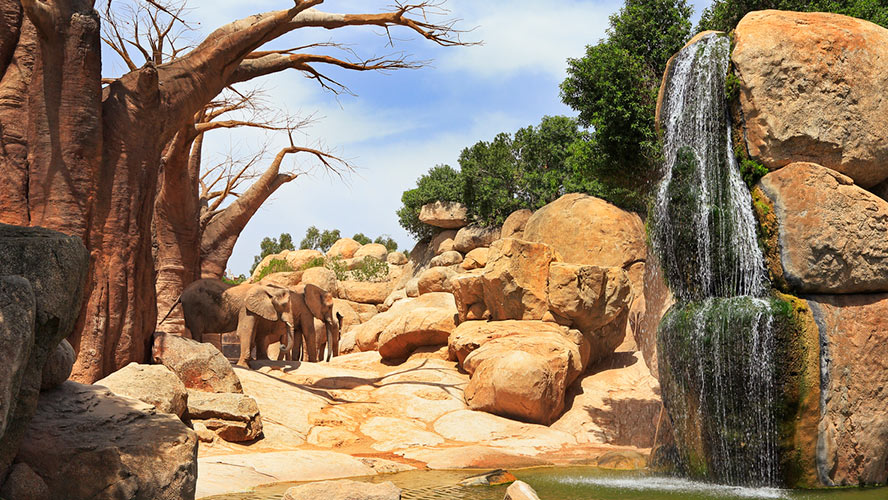
16. Valencia’s Fallas
The festival of Las Fallas is the most important event of the year in Valencia. From 1 to 19 March, the capital of Valencia is at its most festive. During this time, there is no shortage of gunpowder, fire or fun. The daily mascletás (successive firecracker explosions), the events with the falleras [ladies of honour] processions, flower offerings, and huge castles of fireworks in the Jardines del Turia form the build-up to La Cremá, [the burning]. On the night of 19 March, the fallas [enormous, papier mâché figures] are burnt, and all this original, irreverent art is reduced to ashes. It is interesting to visit the Museo Fallero, as there you can see displays of the ninots, as the figures are called, that have been reprieved since 1934.
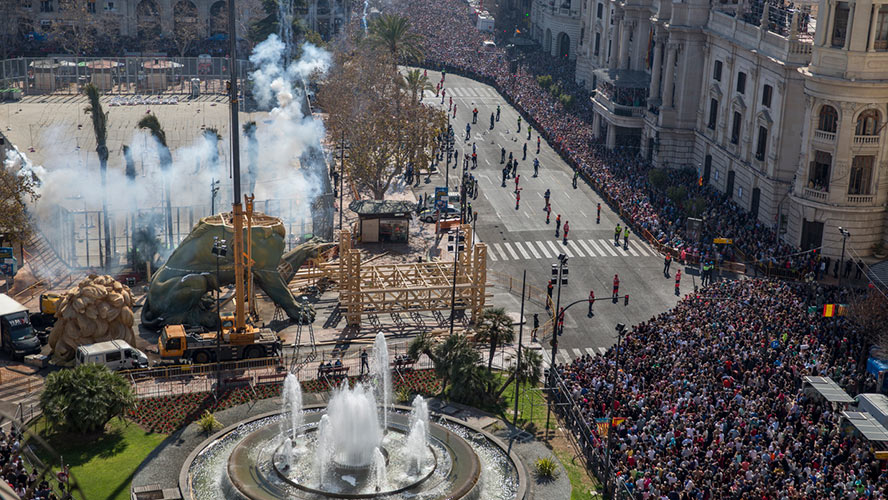
VALENCIA’S MUSEUMS
1. Science Museum
The Museo de las Ciencias Príncipe Felipe is Valencia’s best example of a museum committed to education in the fields of science and technology. The museum is housed in the amazing Ciudad de las Artes y las Ciencias, and its motto is “it is forbidden not to touch”, so there is nothing to worry about for families visiting with children. This museum covers an area of 26,000 m2, divided among three floors, with rooms for both permanent and temporary exhibitions. Among those you need to keep in mind on your visit are the ‘Legacy of Science’ which presents a chronological journey though the life and research of Ramón y Cajal, Severo Ochoa and Jean Dausset. You will need a whole morning if you want to see the museum without having to rush.
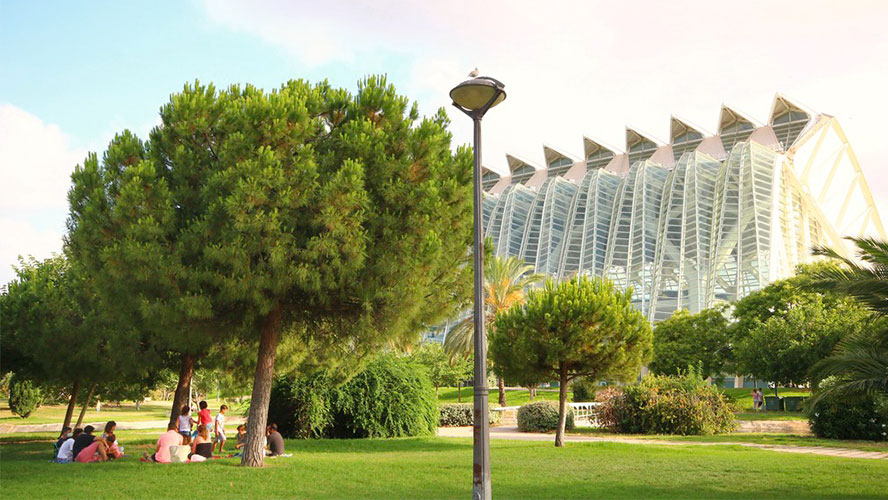
2. Fine Arts Museum
Valencia’s Fine Arts Museum, the city’s largest art museum, is worth a visit to see not only the art collections, but also the beautiful building in which they are held. The museum’s exhibition rooms are set around the cloister of the old San Pío V Seminary School. It houses important collections of sculptures, prints, drawings, photographs, decorative arts, and a few archaeological pieces.
If you’re short of time, we recommend you concentrate on Valencian artists such as Sorolla (to whom four rooms are devoted), Joan de Joanes, Pinazo, los Ribalta, and Vicente López. Also, try not to miss Velázquez’s Self Portrait, and the canvases by El Greco, Van Dyck and José de Ribera.
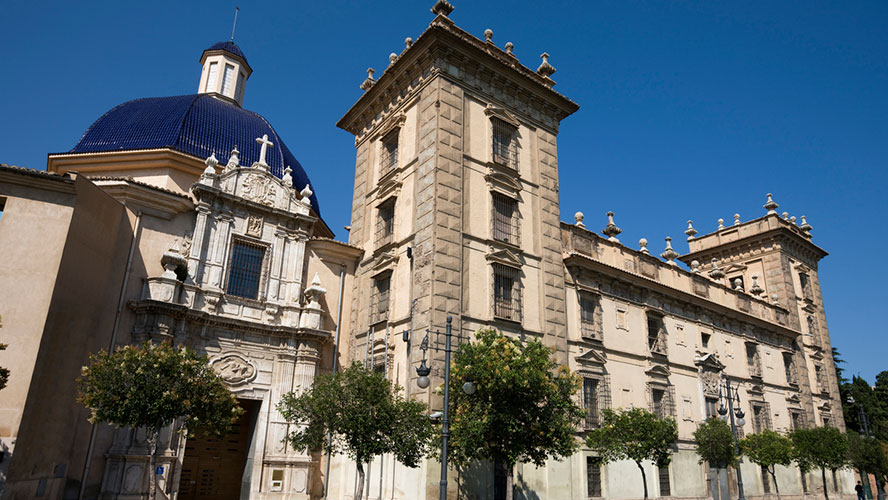
3. Museo Fallero
To understand the importance of Valencia’s Las Fallas celebrations, you need either to experience them for yourself, or at least visit the Museo Fallero. If you choose the second of these options, stop off here for an explanation of the importance of this festival, which has been declared an Intangible Heritage of Humanity. Here you can see the ninots that were spared the flames, the oldest of which date from 1934. It is fascinating to see how the ninots have evolved from the twentieth century until now. Also on display are old posters, badges, etc. This museum, housed in the former convent of the Casa Misión de San Vicente de Paúl, is a fascinating place.

VALENCIA’S BEACHES
1. La Malvarrosa beach
La Malvarrosa is Valencia’s favourite urban beach. Many Valencians still retain happy memories of when the boats would come up to the banks, and people could buy fresh fish from them. If you’re curious about how the beach got its name, we can tell you that it comes from an idea of a gardener at the Valencia Botanical Gardens, who decided to embellish the beach by planting geranios malvarrosas [hollyhocks] there.
This beach, beloved in days of yore by bourgeois families, ordinary people and artists such as Sorolla (who immortalised its light in some of his works) is today one of Valencia’s essential places to visit. Enjoy a stroll along its 2-kilometre stretch, sunbathe or take a dip, and then head for one of the nearby restaurants for a taste of delicious Valencian cuisine.
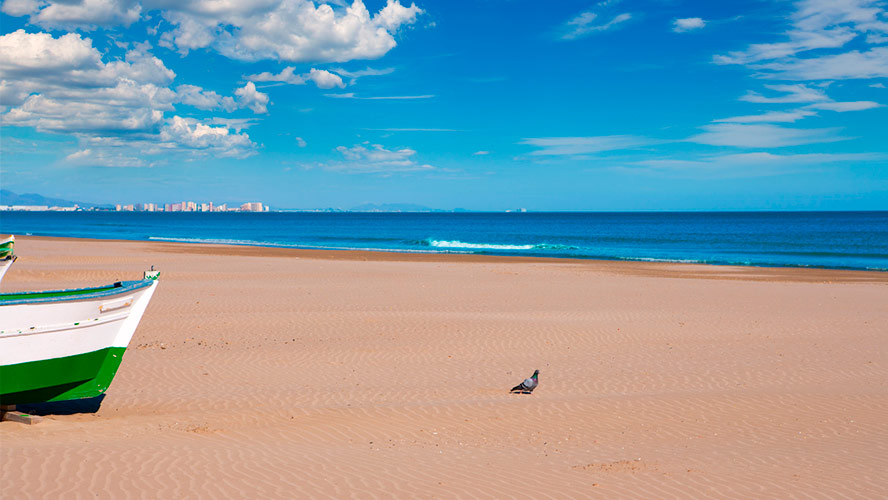
2. Playa del Saler
Far more private and “wild”, Playa del Saler is perfect for relaxing and leisurely strolls. It is on the threshold of the Albufera Natural Park, so it has a pleasant setting and sand dunes of great ecological value. And, if you’re a windsurfing enthusiast, you’ll find this beach a fantastic place to enjoy your favourite sport.
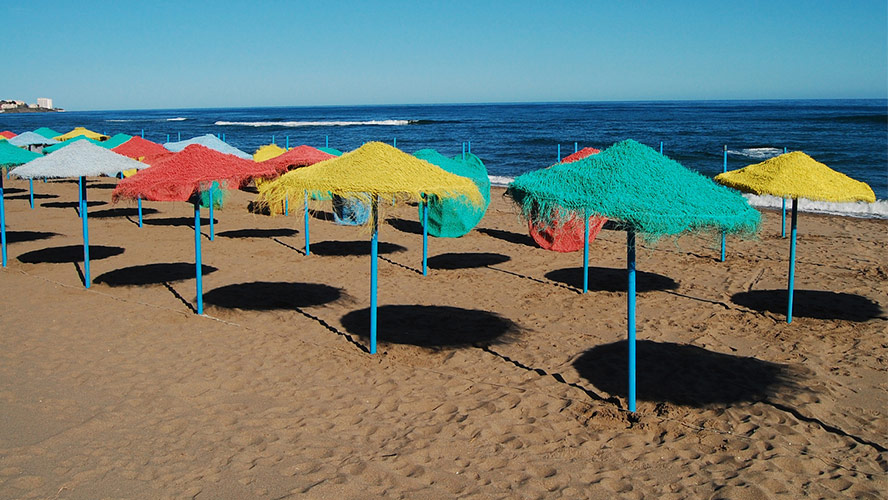
3. Playa de Pinedo
Pinedo beach is considered one of the city of Valencia’s finest beaches, thanks to its calm waters and its sand dunes covered in vegetation. You will find it after the port and the yachting club. Its 2.7-kilometre stretch includes uncrowded nudist areas. If you’re fond of sunsets, from here you can watch a very pleasant one as the lights of the leisure marina begin to switch on.
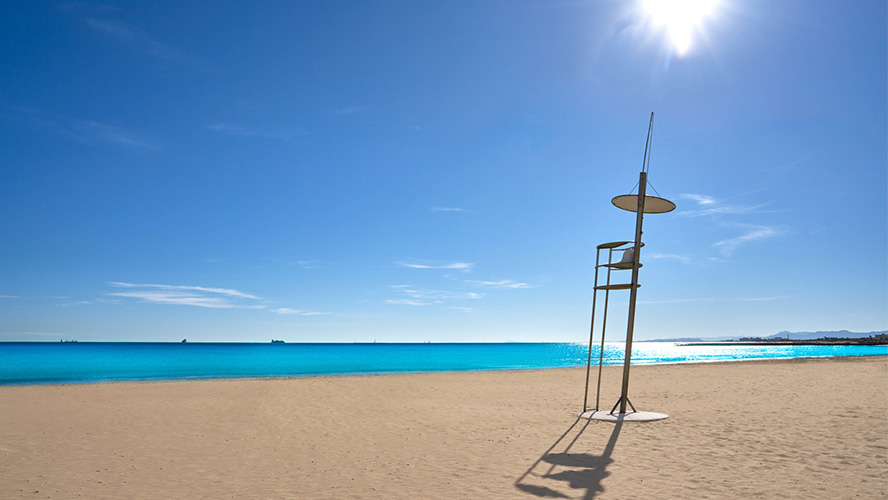
4. Playa de las Arenas
Playa de las Arenas, which lies next to the Juan Carlos I Marina and the well-known La Malvarrosa beach, is an ideal beach for families travelling with children, or for those seeking a wide range of leisure activities and places to eat close at hand. A good way to enjoy the Playa de las Arenas is to spend some time on the beach, and then go for a walk along the seafront promenade lined with palm trees, before sitting down to lunch or an horchata [drink made from tiger nuts]. Not a bad idea, eh?
